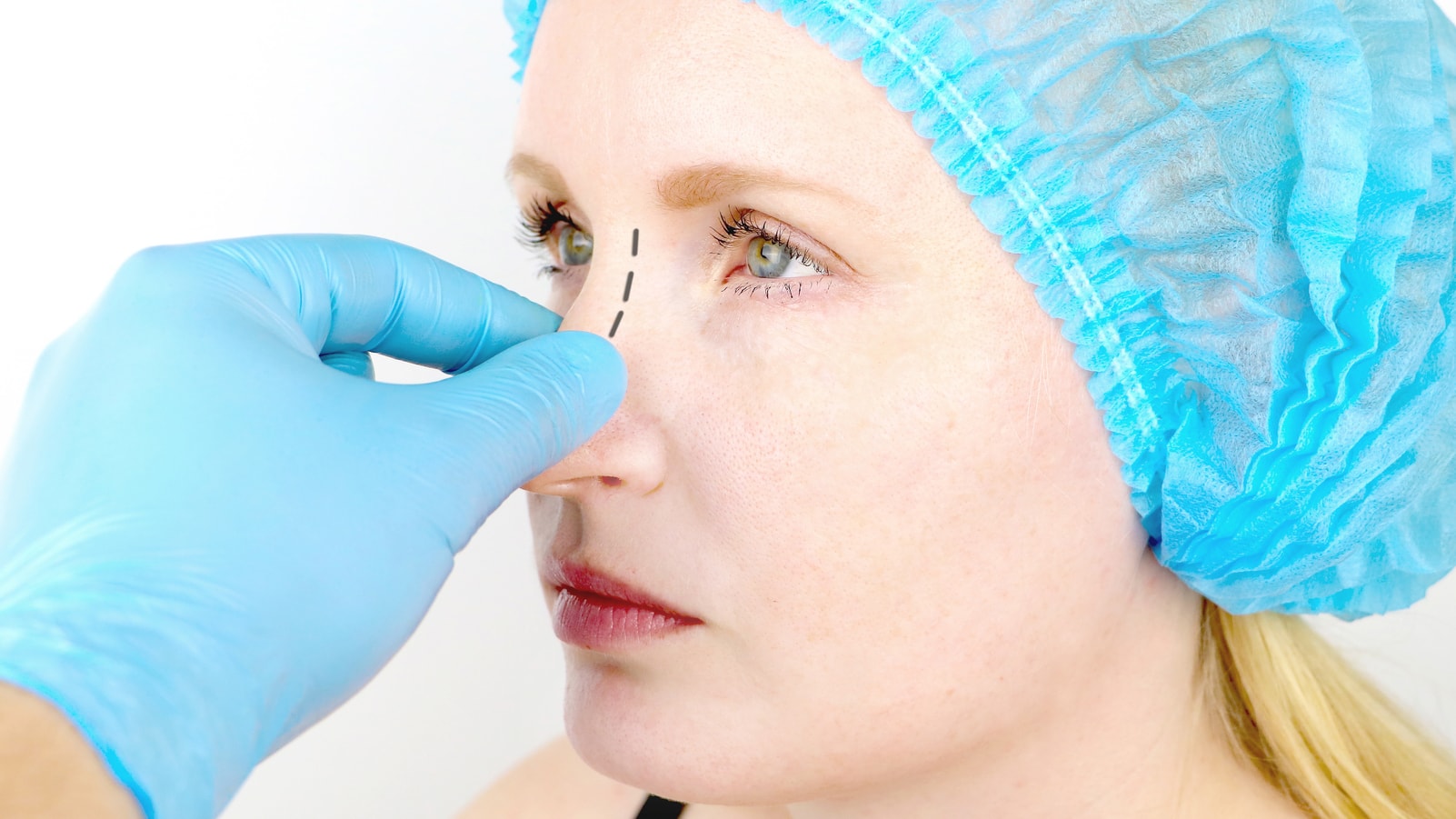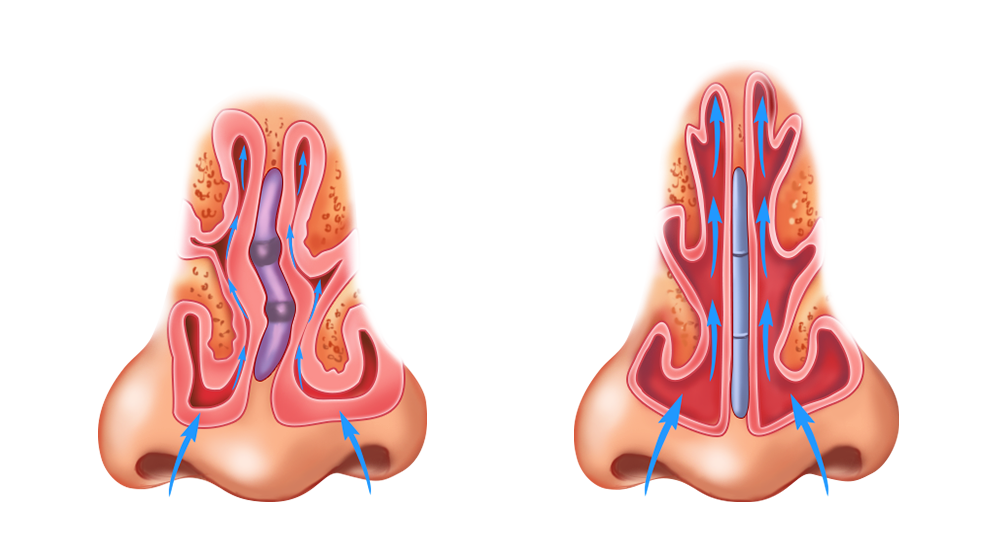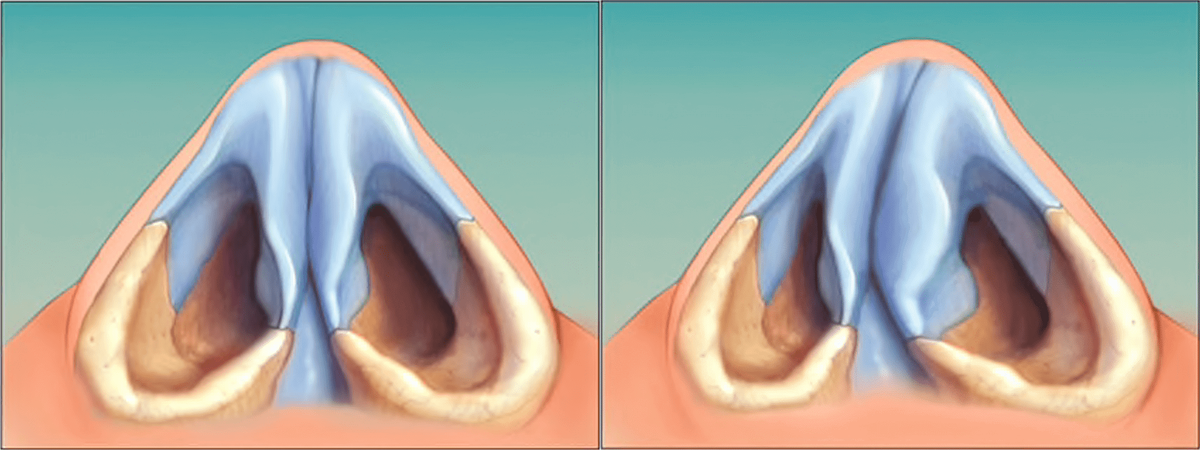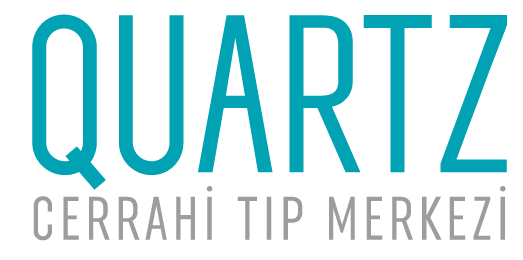A deviated septum is when the nasal bone called the septum is not straight, presenting symptoms such as difficulty breathing and nasal congestion. This condition, which causes issues in daily life, also prevents a person from getting quality sleep. The solution for a deviated septum is achieved through open or closed surgical methods. With nasal bone surgery, a person can permanently attain easy breathing, quality sleep, and an aesthetic nasal appearance.
What is a Deviated Septum?
Also known as septal deviation, a deviated septum is the misalignment of the thin wall inside the nose, either congenitally crooked or later shifted to one side. Caused by factors such as genetic traits, illness, surgery, or trauma, a deviated septum leads to nasal congestion, difficulty breathing, sleep disturbances, sinusitis, and headaches. Without proper treatment, it can lead to serious health problems like pharyngitis, bleeding, and lung diseases.

Depending on the size and degree of deviation of the nasal bone, this condition may be noticeable from the outside in some individuals, while in others, it is not. When the deviation is visible externally, the nose loses its aesthetic appearance. These individuals often experience issues such as nasal congestion and difficulty breathing, along with dissatisfaction with a nasal appearance that does not harmonize with their facial features or fit an ideal structure. Deviated septum is permanently resolved through septoplasty, aiming to enhance the nose’s respiratory function and maintain its visual harmony.
What Are the Symptoms of a Deviated Septum?
Common symptoms of a deviated septum include:
- Difficulty Breathing: The misalignment of the nasal bone obstructs airflow through the nasal passages, making it difficult to breathe.
- Nasal Congestion: Due to the crooked nasal bone, one nostril is narrower, leading to nasal blockage. This often forces individuals to breathe through their mouths, which is not healthy.
- Sinusitis: The deviation in the nasal bone can block sinus drainage, causing infections to accumulate and leading to sinusitis.
- Sleep Apnea: Obstruction in the nasal airways can cause breathing to stop and start during sleep, a condition known as sleep apnea, which poses health risks.
- Snoring: Blocked nasal passages due to a deviated septum result in snoring, a noisy and disruptive form of breathing during sleep.
- Headaches: Poor-quality breathing due to the deviated nasal bone can lead to headaches.
- Sleep Disorders: Insufficient breathing, frequent awakenings, and other sleep issues caused by a deviated septum lead to reduced sleep quality.
Who Is Eligible for Deviated Septum Surgery?

Deviated septum surgery is performed on individuals diagnosed with a deviated septum by a doctor, who experience symptoms such as difficulty breathing, nasal congestion, snoring, sleep disturbances, and sinusitis. Patients generally need to be at least 18 years old unless there is an exceptional circumstance. Other necessary conditions include not being pregnant or breastfeeding and having no health issues that would prevent the surgery.
How is Deviated Septum Surgery Performed?
Deviated septum surgery (septoplasty) is performed under general anesthesia. Depending on the degree of deviation and the patient’s symptoms, one of two techniques is selected:
Open Septoplasty: This technique involves making an incision between the nostrils (externally), lifting the nasal skin, and correcting the nasal bone. Open septoplasty is preferred in cases of advanced deformity.
Closed Septoplasty: An incision is made inside the nostrils, correcting the bone deviation internally. As the incision is made inside the nose, the recovery process is faster, and there is no visible scar.
The surgery, lasting approximately 1-3 hours, aims to correct the nasal bone deviation, allowing easier and more comfortable breathing. If the deviation is visibly affecting the aesthetic appearance of the nose, a necessary rhinoplasty can be performed alongside septoplasty.
Cost of Deviated Septum Surgery
The cost of deviated septum surgery depends on factors such as the level of nasal deformity, the technique used, the doctor’s experience, and whether the procedure is combined with other treatments. You can visit our center for a consultation to determine if you are eligible for the surgery and receive information on pricing.
Post-Operative Care After Deviated Septum Surgery

After deviated septum surgery, a splint is placed on the nose, which should remain for 3-4 days to help the nasal bone heal in the correct position. Some pain, swelling, and bruising around the skin may occur post-surgery, but these effects typically diminish within 7-10 days. For a smooth and quick recovery, here are some important points to consider:
- Avoid wearing glasses during the first few weeks to prevent altering the shape of the nose.
- Sleep with your head elevated on a high pillow; avoid lowering your head below body level.
- Avoid sun exposure.
- Refrain from strenuous activities; spend the recovery period resting.
- Avoid smoking and alcohol.
- Do not allow water to come in contact with the nose for the period specified by your doctor, and use prescribed medications regularly.
Are There Any Risks to Deviated Septum Surgery?
Deviated septum surgery carries risks such as bleeding, infection, scarring, unresolved breathing issues, and nasal deformities. When performed by experienced, specialized doctors, precautions are taken to ensure a safe and ideal procedure.
Is Deviated Septum Surgery Permanent?
Since deviated septum surgery involves reshaping the bone and cartilage, it provides permanent results. Its effects last a lifetime unless there is a subsequent nasal deformity due to trauma or illness.
What Are the Benefits of Deviated Septum Surgery?
The benefits of deviated septum surgery include:
- Relief from nasal congestion and easier breathing.
- Resolution of issues like sleep apnea and snoring.
- Improved sleep quality.
- Elimination of headaches and sinusitis.
- Increased self-confidence, with enhanced breathing comfort.
- Potentially improved nasal appearance, depending on the surgery’s extent.
- Can Deviated Septum Surgery Be Combined with Rhinoplasty?
For patients experiencing breathing difficulties due to a deviated septum, and who are also concerned about nasal issues such as a drooping tip, high bridge, or hump, both surgeries can be performed together. Combining these surgeries enables a faster recovery and saves time.
How Long Does It Take to Recover After Deviated Septum Surgery?
Recovery from deviated septum surgery is completed within a week. Improved breathing and enhanced sleep quality typically become noticeable within 2-3 weeks.
![dr.leyla-arvas-800×1000.jpg[1] dr.leyla arvas](https://www.quartz.com.tr/wp-content/uploads/2024/11/dr.leyla-arvas-800x1000.jpg1_.webp)
Author : Op. Dr Leyla ARVAS
Dr Leyla Arvas is an internationally recognised specialist in aesthetic surgery based in Istanbul. Graduated in 1998 from Istanbul University Faculty of Medicine, she has developed her expertise by studying in Taiwan, Japan and Spain during her 20 years of experience.
This article April 19, 2025 was updated on
Editor: admin@quartz.com.tr


